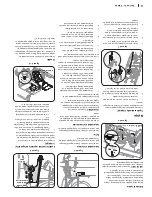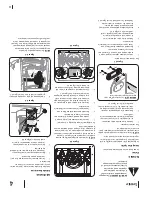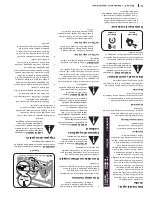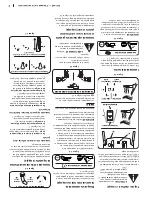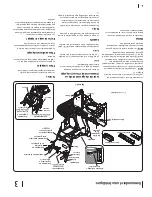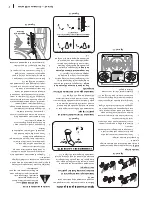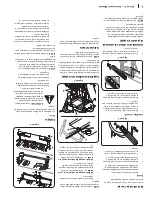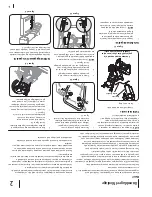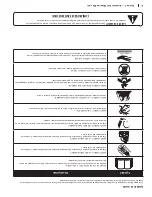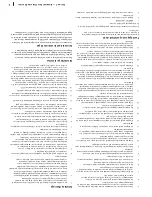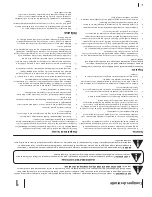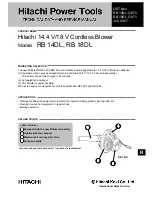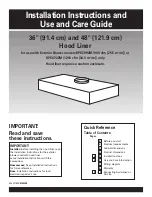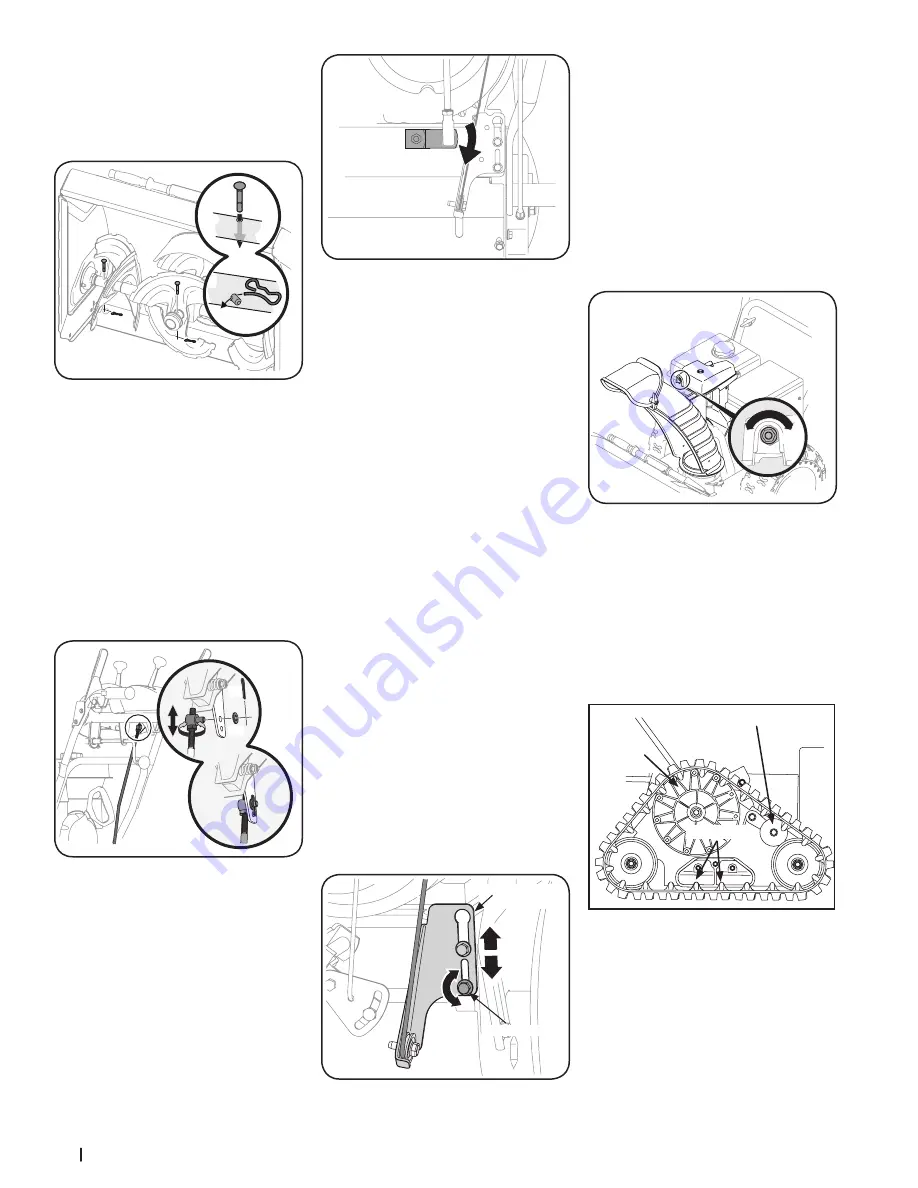
12
S
ection
4— S
ervice
Auger Shaft
At least once a season, remove shear pins (a)
and cotter pins (b) from auger shaft(s). Spray
lubricant inside shaft and around spacers and
flange bearings found at either end of shaft(s).
See Figure 4-6.
(a)
(a)
(b)
(b)
NOTE:
Three Stage Augers Shown
(a)
(b)
Figure 4-6
IMPORTANT:
On 3-stage units, there
is an additional shear pin in the rear
accelerator.
Adjustments
Shift Rod (If Equipped)
If full range of speeds (forward and reverse)
cannot be achieved, adjust shift rod as follows:
1.
Place shift lever in fastest forward speed
position.
2.
Remove cotter pin (a) and washer (b) from
adjustment ferrule on shift rod and pull it
out from shift lever. See Figure 4-7.
(a)
(b)
Figure 4-7
3.
Pivot shift bracket downward as far as it
will go. See Figure 4-8.
4.
Rotate ferrule up or down on shift rod as
necessary until it lines up with upper hole
in shift lever. Refer to Figure 4-7 inset.
5.
Insert the ferrule into the upper hole and
secure with the washer and cotter pin.
Auger Control
Refer to Assembly & Set-up section for
instructions on adjusting auger control cable.
Skid Shoes
Refer to Assembly & Set-up section for
instructions on adjusting skid shoes.
Figure 4-8
Drive Control (If Equipped)
When drive control lever is released and in
disengaged “UP” position, cable should have
very little slack. It should NOT be tight.
NOTE:
If excessive slack is present in drive cable
or if unit’s drive is disengaging intermittently
during operation, the cable may be in need of
adjustment.
Check adjustment of drive control lever as
follows:
1.
With drive control lever released, push
unit gently forward. It should roll freely.
2.
Engage drive control lever and gently
attempt to push the unit forward. The
wheels should not turn. The unit should
not roll freely.
3.
If equipped with a shift lever, with drive
control lever released, move shift lever
back and forth between the R2 position
and the F6 position several times. There
should be no resistance in the shift lever.
If any of the above tests failed, the drive cable is
in need of adjustment. Proceed as follows:
1.
Shut OFF engine. Refer to the Engine
Operator’s Manual.
2.
Loosen lower hex screw (a) on drive cable
bracket. See Figure 4-9.
3.
Position bracket upward to provide more
slack (or downward to increase cable
tension).
4.
Retighten upper hex screw.
5.
Check adjustment of drive control lever
as described above to verify proper
adjustment has been achieved.
(a)
Drive Cable
Bracket
Hex Screw
Figure 4-9
Chute Assembly (Overhead Chute Control) (If
Equipped)
If chute fails to remain stationary during
operation, pre-load of chute can be adjusted
by tightening hex nut found on front of chute
control assembly.
1.
To increase preload, tighten
hex nut (a) clockwise in ¼ turn intervals.
The chute control rod will need to be held
stationary when tightening the nut. See
Figure 4-10.
2.
If chute directional control is difficult to
crank, decrease preload by loosening hex
nut counter-clockwise in ¼ turn intervals.
(a)
Figure 4-10
Continuous Tracks
The snow thrower is equipped with an auto-
tensioner on both the left and right sides. The
system is designed to maintain constant tension
on both tracks. However, if the snow thrower
fails to propel itself because the track wheel is
“jumping” drive lugs, the tracks are too loose
and are in need of adjustment. See an authorized
Service Dealer to have the tracks properly
adjusted. See Figure 4-11.
Track
Wheel
Auto-tensioner
Drive Lugs
Figure 4-11

















